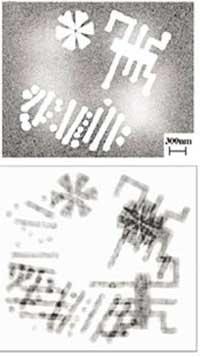X-ray microscope
X-rays have long been used in crystallography for the detection of atoms, but unfortunately it is only valid for the structures that form crystals, that is, for cases where atoms are regularly arranged. And in our environment there are many structures that are not, such as cells or polymers.

Researchers at Standford University claim to have developed a microscope capable of visualizing these atoms. The new device is hybrid as it combines the characteristics of crystallography with the microscope. The sample is bombarded with a series of x-rays acting as a single wave, that is, a series of coherent x-rays. The shock with the sample produces disturbances in the rays and, precisely, the patterns of these disturbances are collected for the generation of images. The same thing is done in crystallography, but on a large scale. In this case only disturbances are collected in very small areas and the local structures of the material can be seen.
The first microscope of this type was developed by the same group in 1999. The one at the time collected two-dimensional images with a resolution of 70 nanometers (nm). The recently presented in the journal Physical Review Letters, however, can see in two dimensions structures ten times smaller, with a resolution of 50 nm in three.
With this capacity the microscope is able to differentiate structures of 8 nm. While not yet seeing atoms, increasing the intensity of X-rays or lengthening the exposure time, researchers believe they will achieve the goal. The problem is that not all samples can be bombarded for a long time. Strong materials, such as semiconductors, would be bombarded, but cells would not. High-intensity X-ray lasers are more suitable but are in development.
More information:
Nature
Microscopy
Buletina
Bidali zure helbide elektronikoa eta jaso asteroko buletina zure sarrera-ontzian











